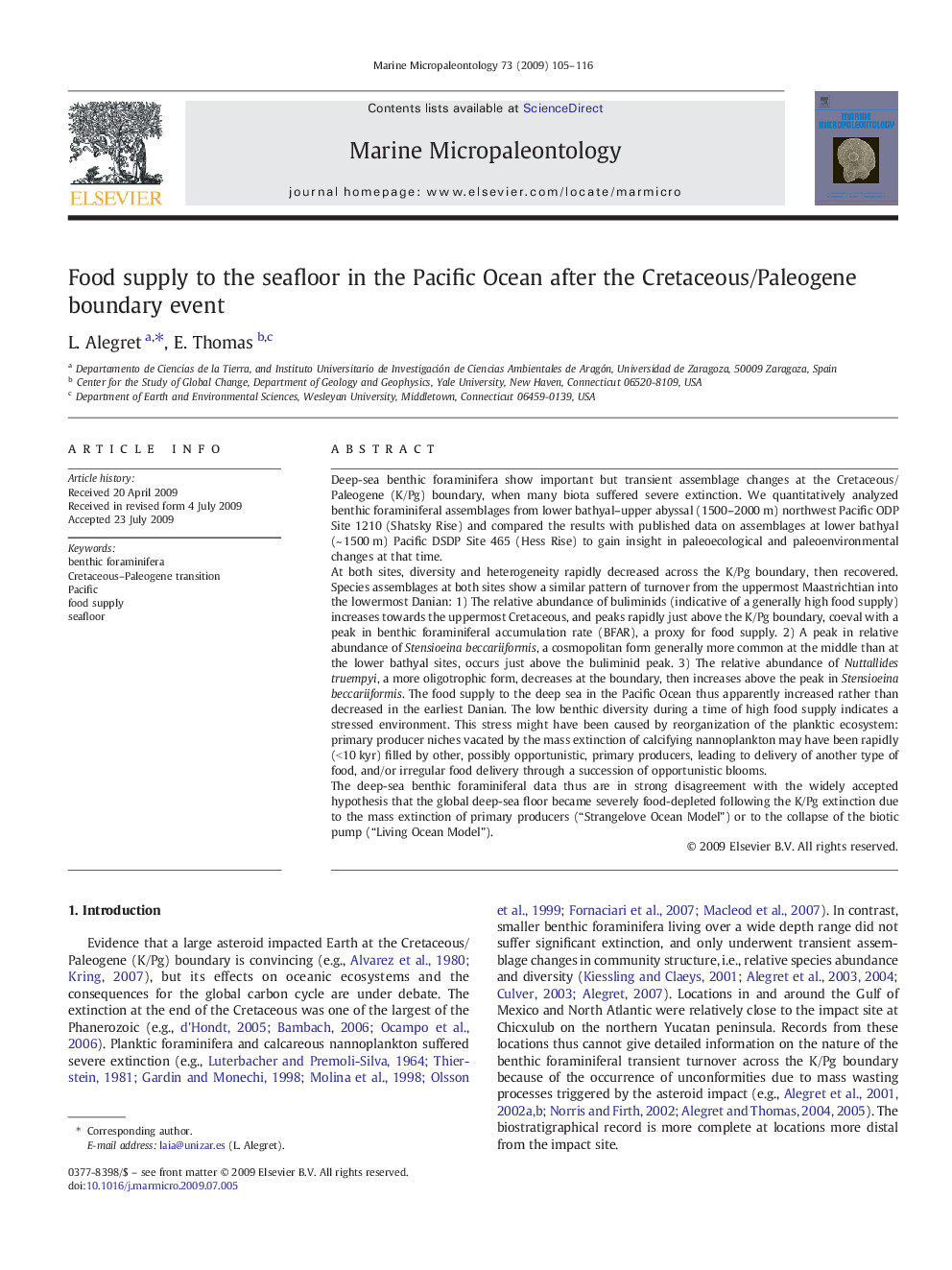| Article ID | Journal | Published Year | Pages | File Type |
|---|---|---|---|---|
| 4749284 | Marine Micropaleontology | 2009 | 12 Pages |
Deep-sea benthic foraminifera show important but transient assemblage changes at the Cretaceous/Paleogene (K/Pg) boundary, when many biota suffered severe extinction. We quantitatively analyzed benthic foraminiferal assemblages from lower bathyal–upper abyssal (1500–2000 m) northwest Pacific ODP Site 1210 (Shatsky Rise) and compared the results with published data on assemblages at lower bathyal (~ 1500 m) Pacific DSDP Site 465 (Hess Rise) to gain insight in paleoecological and paleoenvironmental changes at that time.At both sites, diversity and heterogeneity rapidly decreased across the K/Pg boundary, then recovered. Species assemblages at both sites show a similar pattern of turnover from the uppermost Maastrichtian into the lowermost Danian: 1) The relative abundance of buliminids (indicative of a generally high food supply) increases towards the uppermost Cretaceous, and peaks rapidly just above the K/Pg boundary, coeval with a peak in benthic foraminiferal accumulation rate (BFAR), a proxy for food supply. 2) A peak in relative abundance of Stensioeina beccariiformis, a cosmopolitan form generally more common at the middle than at the lower bathyal sites, occurs just above the buliminid peak. 3) The relative abundance of Nuttallides truempyi, a more oligotrophic form, decreases at the boundary, then increases above the peak in Stensioeina beccariiformis. The food supply to the deep sea in the Pacific Ocean thus apparently increased rather than decreased in the earliest Danian. The low benthic diversity during a time of high food supply indicates a stressed environment. This stress might have been caused by reorganization of the planktic ecosystem: primary producer niches vacated by the mass extinction of calcifying nannoplankton may have been rapidly (<10 kyr) filled by other, possibly opportunistic, primary producers, leading to delivery of another type of food, and/or irregular food delivery through a succession of opportunistic blooms.The deep-sea benthic foraminiferal data thus are in strong disagreement with the widely accepted hypothesis that the global deep-sea floor became severely food-depleted following the K/Pg extinction due to the mass extinction of primary producers (“Strangelove Ocean Model”) or to the collapse of the biotic pump (“Living Ocean Model”).
